Cirque du Soleil aerialist Caroline Lauzon still shudders over the springtime meeting as she would a tense performance mishap, the moment her life dangled precariously during a complicated onstage maneuver gone awry.
On a cool mid-March morning, the 37-year-old Quebec native gathered backstage at the Bellagio with 110 fellow cast members of “O,” the popular aquatic fantasy show. Married to fellow Cirque performer Marco De Santi, who is a skater in the “The Beatles Love” show, and with a young daughter to support, Lauzon was wracked with anxiety.
A highly lethal virus was on the march across the globe. Cirque’s shows in China already had been shuttered. The Las Vegas performers knew their city would be next.
Bosses confirmed their fears: Beginning that day, March 15, the company’s six resident shows would switch off their stage lights. Not only “O,” but “Ka” at the MGM Grand, “Love” at The Mirage, “Mystere” at Treasure Island, “Zumanity” at New York-New York and “Michael Jackson One” at Mandalay Bay.
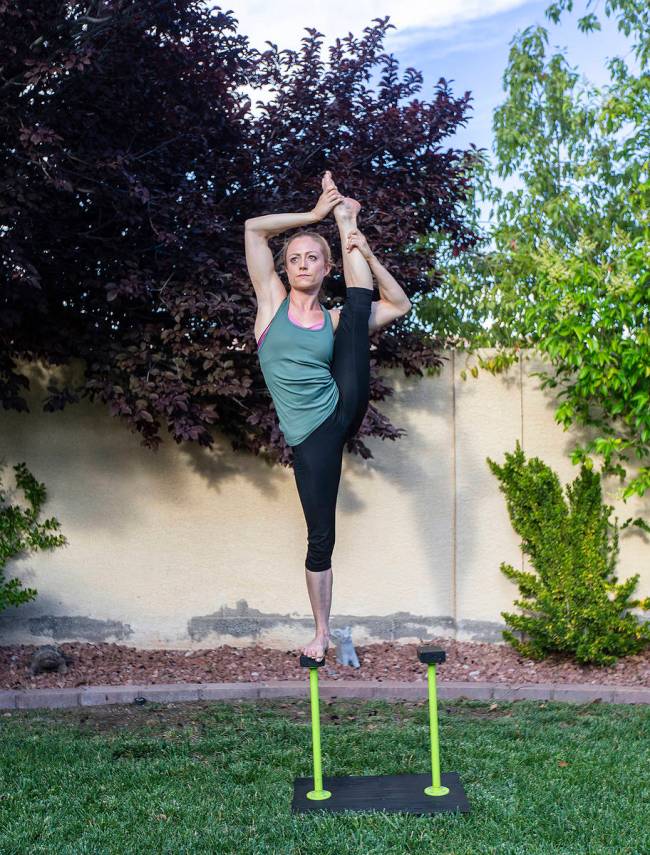
They were all going dark, joined eventually by the entire Strip.
The move marooned some 1,300 Cirque performers and support cast who hail from across the world — an ensemble of singers, musicians, character actors, clowns, aerialists, trampoline and trapeze artists, synchronized swimmers and divers, as well as a support platoon of wardrobe consultants, carpenters and electricians.
CEO Daniel Lamarre called the company’s shutdown “the most difficult day in Cirque history.” Lauzon agreed.
“It was scary,” she said. “People were upset.”
Yet there was also a sense of relief.
As news of the pandemic worsened, Lauzon and fellow “O” performers came perilously close to both the audience and one another. “We knew viewers and cast could be affected,” she said. “Some scuba divers were sharing underwater regulators.”
Following that final curtain call, hundreds of Cirque performers walked off their respective stages for what most thought would be a weekslong hiatus. Many even left their makeup and costumes in their dressing rooms.
They couldn’t know then that the shutdown would drag on for months, stranding countless performers far from their native countries, prompting many to exist off savings as their resources dwindled. Many had entered the U.S. on restricted visas and did not qualify for unemployment. A handful sold their houses and returned to lives abroad, foreign speakers who struggled without their company interpreters.
While they endure quarantine, the remaining Cirque cast has continued to train — in living rooms, backyards and home gyms, even swimming in Lake Mead — knowing that any lapse in their skill sets would be dangerous once they returned to the stage.
“For many performers, Cirque represents their second or third career after the Olympics or the National Ballet,” said R.J. Owens, a comedian who portrays Bebe Francois in Cirque’s “Mystere.” “They have a built-in training ethic. They’re not going to let their bodies go to waste.”
But amid the personal trauma, a sense of community has been forged. Cirque performers such as Lauzon raised money for needy colleagues. Many Las Vegas residents also realized that these acrobatic wizards were their neighbors who had become part of the community’s fabric, and reached out in their own ways.
As summer turned to fall, furloughed performers needed every lifeline thrown their way. In June, the Strip’s pre-eminent production company filed for bankruptcy, in part because of losses from coronavirus-related shutdowns, a move that left its future in question.
For Cirque veterans, a trusted financial buoy was suddenly in danger of sinking. The questions were endless: How would they survive? Should they pursue alternative careers? Even if Cirque returned, would a reorganized company kill off less-popular shows, ending the artistic dreams of countless artists?
“In the beginning, we were all asking, ‘So, what happens now?’ said Lauzon, a former Canadian national team diver and junior champion on the 10-meter platform. “Nobody knew then. And nobody still knows.”
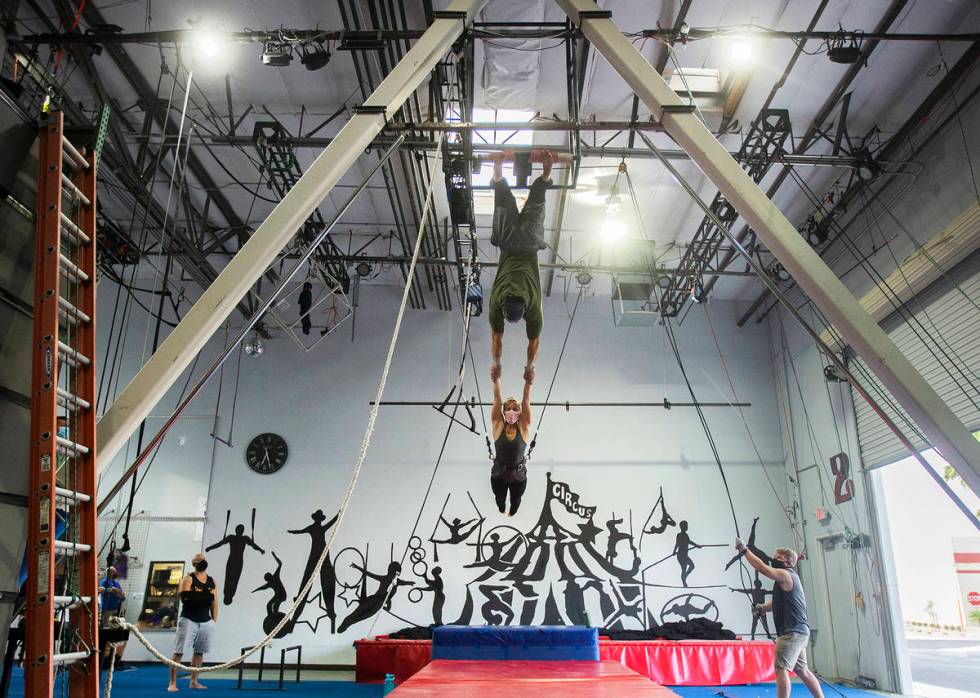
‘In a holding pattern’
Cirque du Soleil, or “Circus of the Sun,” is a live performance phenomenon started in 1984 in the provincial Quebec city of Baie-Saint-Paul with the antics of two quirky street performers. Over four decades, the spectacle has evolved into the world’s largest contemporary circus, which has visited 300 cities on every continent but Antarctica, before a collective audience of 180 million eager viewers.
Each production features lavish costumes and stage props, live music and a synthesis of circus styles from around the world. It’s as if Pablo Picasso and Tim Burton teamed up to start their own modern fantasy show, inspiring avid fan clubs worldwide.
In Las Vegas, Cirque’s six shows played to 9,500 people a day, becoming one of the Strip’s biggest performance draws.
Then came the COVID-19 shutdown.
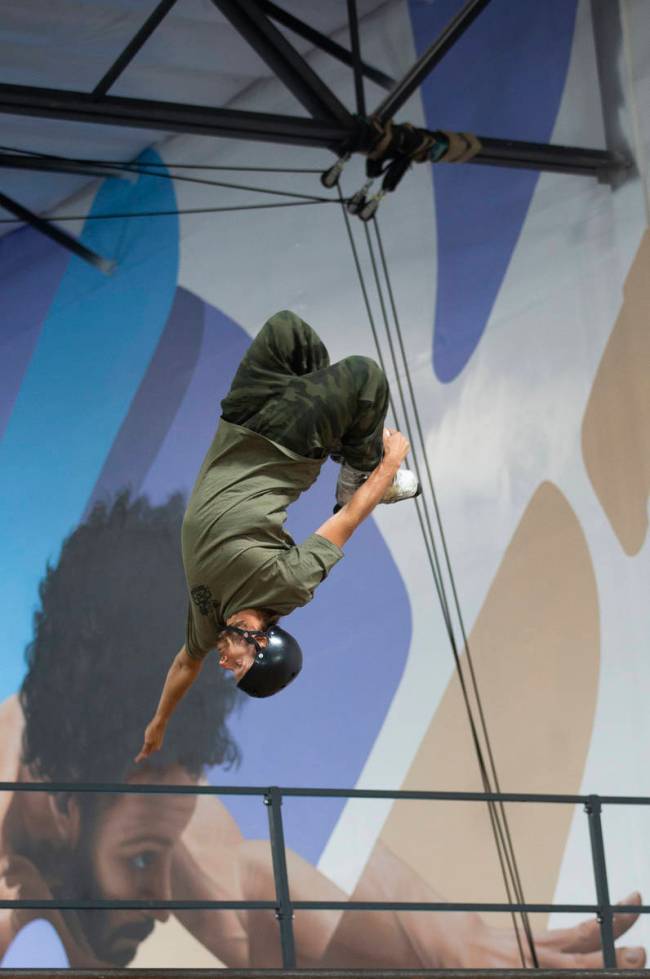
Some 750 artists working directly for Cirque immediately lost their income. Many of the 600 show technicians — including riggers and carpenters — employed by MGM Resorts International were provided an extra two weeks’ pay. Cirque performers are paid at least $125 per show, but veterans make more.
The closure left performers confused about their status: Had they been fired? Furloughed? Or mothballed? “The term we use in Canada is ‘temporary layoff,’ ” Cirque du Soleil Vice President Matt Nickel said. “That means you maintain your link of employment and benefits, but without the salary.”
He said the company offered a one-time payment of $2,000 to 70 foreign-born artists without legal status who did not immediately qualify for unemployment insurance. Many eventually got help through the federal government’s temporary Pandemic Unemployment Assistance program.
Still, many Cirque performers felt abandoned. With little contact or guidance from bosses, they’d been set adrift, forced to rely on colleagues for encouragement and information.
“Once we were let go, we got no communication from the company,” said Bill May, a 41-year-old synchronized swimmer for “O,” who as a competitive swimmer won 14 U.S. national titles and nearly 20 international titles. “We’ve devoted so many years of our lives to Cirque. We love this company. I guess we expected to get that same love back.”
Nickel empathizes. “I understand how people can feel adrift,” he said. “We’re all in a holding pattern.”
‘I’m going to need help soon’
Perhaps no one felt more isolated than Lucas Altemeyer, a 31-year-old Brazilian who was among 40 performers hired last year when Cirque expanded “O” to seven days a week. He arrived in the U.S. in October 2019, an aerial hoops artist whose act requires him to spin like a top, high above the stage.
“It’s a challenge in the beginning to spin that fast,” he said. “You feel nauseous, you want to puke at practice, but then you get less sick.”
Altemeyer’s P-1 visa status is just as unsettling: Already living paycheck to paycheck before the shutdown, he’s not entitled to unemployment and can’t work for anyone other than Cirque. Once his contract ends, he has 30 days to leave the U.S.
“This is the most uncertain time in my life,” he said. He and his wife, Monize, exist on their meager savings. Holed up in their Summerlin apartment, they have cut their food costs and use air conditioning sparingly. They close doors in unused rooms, turn off lights and unplug nonessential appliances.
They also drink less alcohol and reduced the limits on their auto insurance, while looking for more ways to save. Before March, the couple was thinking of buying a house, a dream now dashed. “I can’t last longer than a few months,” Altemeyer said. “I’m going to need help soon.”
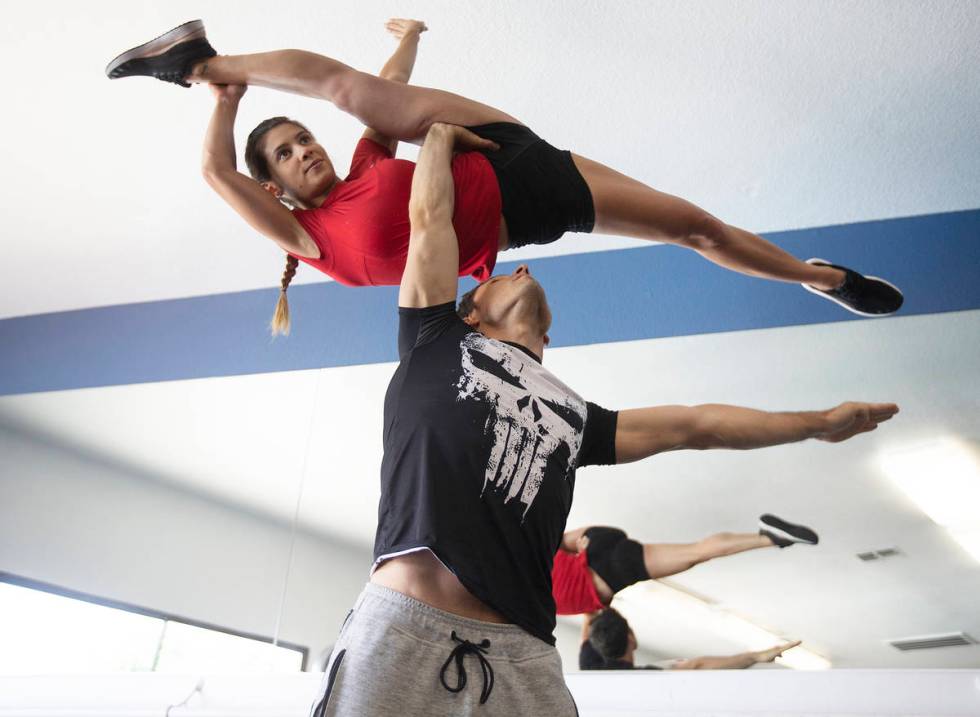
“O” aerialist Lauzon and her acrobat husband have it easier. Both are U.S. citizens and longtime Cirque performers. Lauzon has a real estate license to fall back on. De Santi’s family runs a local Brazilian restaurant, Boca do Brasil.
At first, Lauzon kept in touch with colleagues via a private chat room. They gave advice, passed on news of employment prospects and showed off pictures of children, including snapshots of Lauzon’s 3-year-old daughter, Maia.
“We all joked we were gaining so much weight,” she said. “Doing 480 shows a year is a lot of activity. Then to be stuck at home where all those calories aren’t being spent.”
As the weeks passed, Lauzon watched as a dozen struggling colleagues returned to their home nations.
In May, she started a Go Fund Me site called “Artists in Need,” which quickly raised more than $20,000 for struggling performers and their families.
“Most of us here at Cirque are lucky enough to have access to government help during this difficult time,” the site reads. “Unfortunately some members of our circus family are left here with NO unemployment rights, NO rights to work and mostly NO idea when they will get a single dollar to feed themselves, pay the rent, car insurance, or phone bill. The list is long.”
Checks were soon sent to 21 artists from Canada, Brazil, Ethiopia, France, Ukraine, Russia and Mongolia. Some interactions, she said, broke her heart.
Early on, she contacted Altemeyer, who first passed on financial help, insisting that others were in more dire need. “I saw how some friends counted coins just to survive, and I told Caroline, ‘Give the money to them,’ ” Altemeyer recalled.
Weeks later, when Lauzon called back, the situation had changed. “I was really beginning to struggle,” Altemeyer said. So, he accepted a check for $1,000: “That was a lot of money, man.”
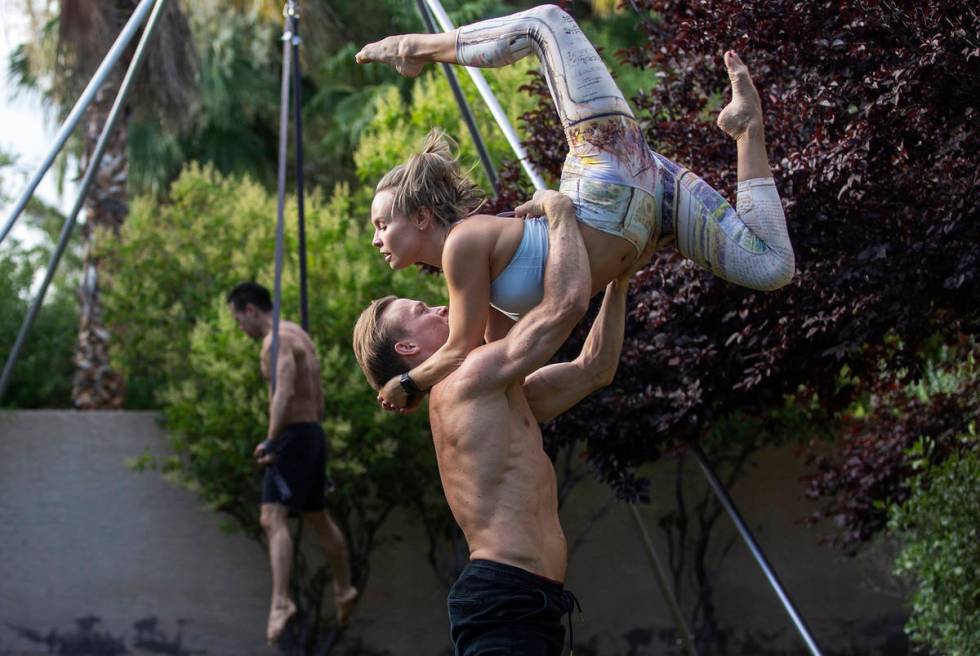
One performer who received aid was a former Polish Olympic diver who was scrambling to earn his U.S. green card during the layoff. Brazilian Marcos Silva also got help. The 40-year-old acrobat joined “O” last year on a restricted P-1 visa, hired to catch flying trapeze artists like Lauzon.
Lauzon offered a room for the family. Instead, he accepted the donation check as he continues to struggle, at one point falling three months behind on his rent.
“I worked 10 years for this chance,” Silva said. “This is my dream. I’m not going to risk going home to Brazil. When the Cirque shows restart, I’m going to be there. I’m ready.”
‘We’re just as valuable’
As March turned to April, the circus ensemble continued to wait, keeping up the daily workouts with a Marine Corps regimen. Mostly, though, they were just bored.
They missed the adrenaline of the lighted stage, the adulation of the crowd. By late May, many could stand it no longer.
Loukas Kosmidis, a dancer on the Michael Jackson Tour, was talking with friends when he landed on a novel idea. He called Cirque performer friends Angelina Puzanova and her husband, William Hulett, who ran Show Talent Productions.
On their oversize home lot west of Interstate 15 they kept several pieces of heavy machinery, including a towering crane, the perfect base for a high-wire act.
Puzanova is a third-generation member of a famous Russian circus family who won a Gold Clown at the International Circus Festival of Monte Carlo. Now co-owner of a company called Show Talent Productions, she expected a handful of acrobats, but once word spread, everyone wanted in. On a weekday morning in May, 30 performers showed up, including dancers, aerialists, tightrope walkers, contortionists, skaters and hand-to-hand gymnasts.
The three-minute video starts with two men arriving at an industrial site. They knock on a door and are asked the password. “Nonessential,” one says.
Hulett, 38, a Montana native who plays a James Bond character in “Zumanity,” called the dialogue an inside joke. “I have buddies who run large equipment and they all laugh at me,” he said. “My job was the first to go down, while they’re still working. I felt like wasted space.”
In the daylong shoot, artists played cameo roles — spinning, jumping, dancing, just having fun — to music that featured the adapted lyrics of the 2016 song “Work From Home” by the R&B group Fifth Harmony.
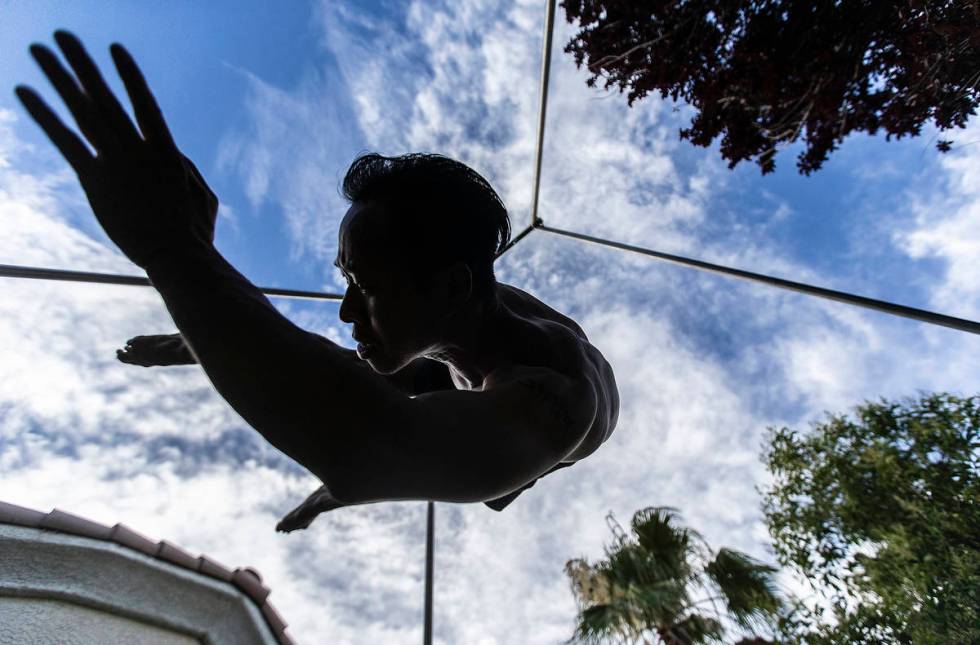
The video was included on a Go Fund Me page that helped raise money for struggling colleagues, but that wasn’t all.
“We just wanted to be heard, said Luba Kazantseva, an aerialist in “Mystere” and a graduate of Moscow’s Bolshoi Ballet School. “Las Vegas is the capital of entertainment, but the first thing cut in a crisis were the artists. We’re just as valuable as other professions and we deserve to go back to work.”
‘A human production’
So long away from the stage, the Cirque cast misses the camaraderie of people they have come to consider family.
Jonelle DeBlanc, 41, joined “O” in December as a wardrobe supervisor handling the show’s elaborate costumes: “The outfits are luscious, layered and mind-blowing in their beautiful richness. And because ‘O’ is an aquatic show, they all get wet.”
But it’s her eclectic colleagues she misses most.
“All 30 people in our department got separated,” she said. “I’d just gotten the hang of the seven-day-a-week schedule. It was all going well, and then — poof! — it’s gone. Even though you could see it coming, it’s still a shock. I miss those people.”
One evening in late June, Hungarian-born veteran circus performer Jozsef Tokar arrived at a private practice at a gym called Trapeze Las Vegas, his right arm and shoulder wrapped in a sling from a show mishap. But the floor-catcher in “O,” wasn’t going to stay away. “I came to see these guys,” he said, pointing to two aerialists practicing a spinning high-wire act, standing near a sign that read, “Unattended children will be sold to the circus.”
“I spend more time with these guys than I do my own family,” he added. “We’re performers. This is our identity.”
Many Cirque artists are private people with little time for socializing with outsiders. Still, many fans in Las Vegas and elsewhere don’t consider them strangers. And they’re doing what they can to help.

Trapeze Las Vegas owners Stephen and Lisa Cote donated their studio so “O” aerialists could practice. “These people spend their money here, they live here, raise their children here,” Stephen said. “They’re Las Vegans.”
Gray McCarty, 30, a member of the Hardcore Cirque Fans social media site, contributed to fundraising efforts and emailed company officials imploring them to do more for struggling artists. An employee for a Bay Area tech company, McCarty has seen 85 Cirque shows.
“At my very first show, I felt like I was colorblind, suddenly emerging in this world of Technicolor, like Dorothy landing in Oz,” he said. “This crazy circus is a human production, based on real people — parents and spouses struggling to feed their families. That’s easy to forget.”
‘Looking on the bright side’
For now, the question remains: When will Cirque du Soleil return and who will operate the circus extravaganza in a new post-COVID-19 world?
“Your guess is as good as mine,” Nickel said. “Right now, sanctions are still in place. And we’re not sure if there will be a new owner, or when.”
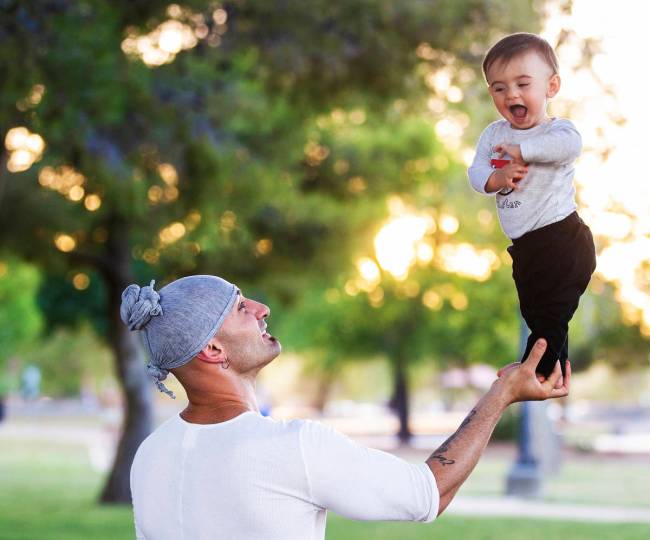
That doesn’t stop Cirque artists from guessing.
One night, Holland Lohse and a few performers worked out in the backyard of his Summerlin home. The 31-year-old acrobat who performed in “Love” says the virus has affected his industry “in a seismic way.” He’s ready for the ground to stop shaking.
Lohse and fellow “Love” acrobat Tristan Jih have a bet over when they’ll be back. The loser pays for a movie “with all the fixings,” including admission and snacks.
“I say 2021,” Lohse said.
Jih, 38, hanging upside down from a practice contraption, disagreed.
“Earlier,” he said.
Still, there are little silver linings to this dark coronavirus cloud. Many artists now practice under the stars, not the stage lights. They enjoy the extra time with family, trying new routines that have nothing to do with Cirque.
Luba Kazantseva and Loukas Kosmidis are doting on their infant son Theodoros, who at less than a year old already can balance on his father’s outstretched hand.
“We’re seeing little changes, facial expressions and how he’s discovering his voice, Kosmidis said. “We’re looking on the bright side instead of stressing ourselves out.”
For synchronized swimmer Bill May, the gift came in early summer when he did morning laps in a still-closed Lake Mead National Recreation Area. “For just a bit, we had the entire lake to ourselves,” he recalled. We’d swim to islands and along the coast. The water was just so pristine and no one else was there.
“It was a once-in-a-lifetime opportunity, and it came from a disaster.”
Adapting to a new spin
But in late June, as Cirque du Soleil filed for bankruptcy protection, the tense tightrope walked by many new hires finally snapped.
The 40 artists hired last year to augment the new seven-day schedule at “O,” many living in the U.S. on highly restrictive visas, were among 250 Las Vegas business and sales-side employees who lost their jobs. Also included in the local job cuts was the 50-member Blue Man Group. Companywide, 3,500 people lost their jobs.

Those P1 visa-holders were told they had 30 days to leave the country.
Performer Lucas Altemeyer, who struggled for months to keep a financial toehold in the U.S., faced his firing first with sadness, then a steely resolve.
He heard the news early one morning and sat alone in his living room, absorbing the blow while his wife, Monize, slept in the other room. “I didn’t wake her,” he said. “I wanted her to have her dream of living in the U.S. for just a few more hours.”
Days later, as he packed to return to Brazil, he already was planning his next move. Maybe he’d become a performance coach.
After all, he’s an aerial hoops artist, used to the nauseating spin of life.
He would adapt.













